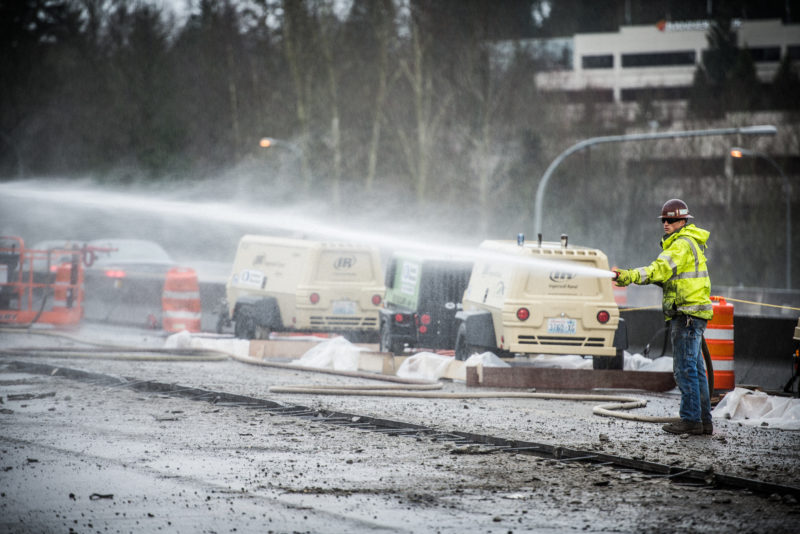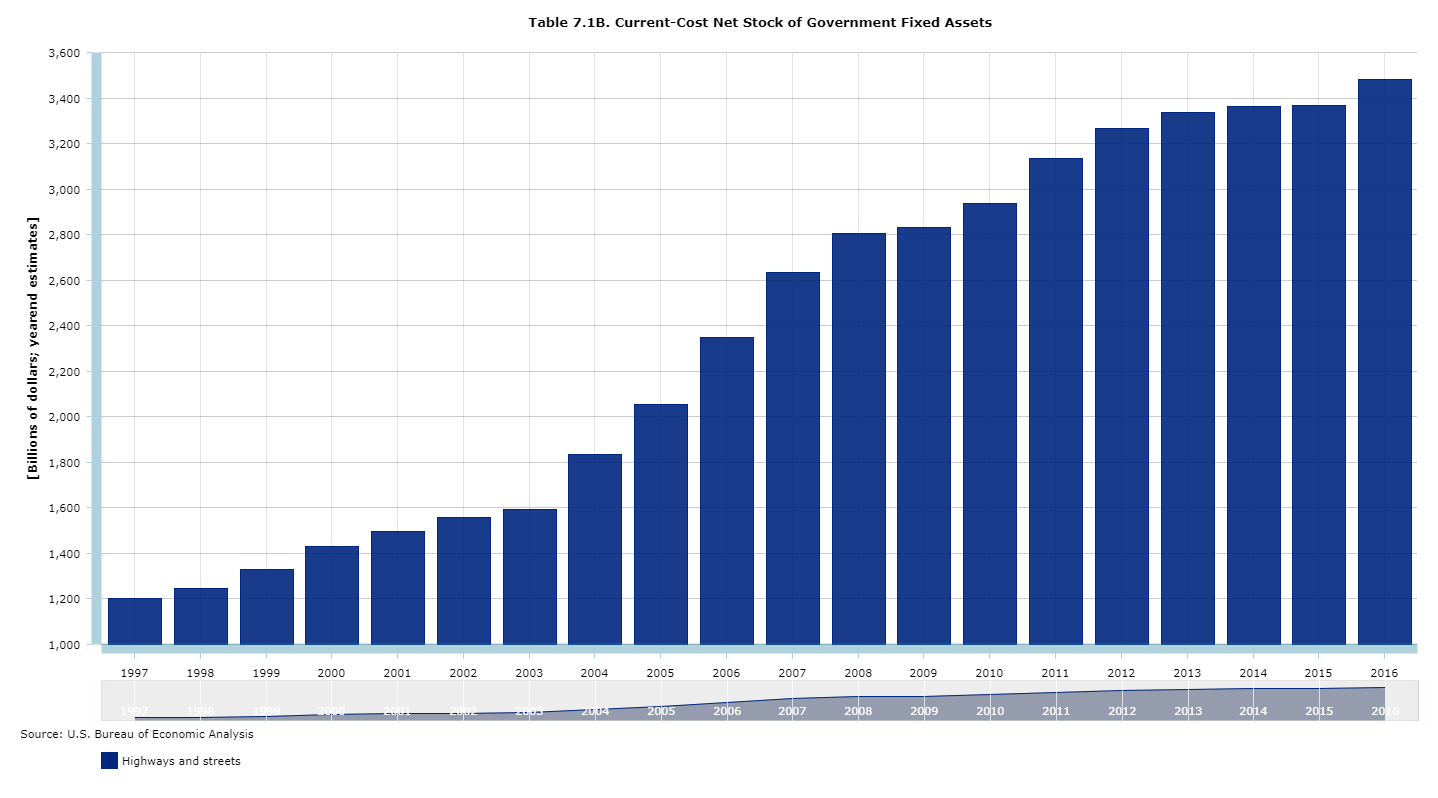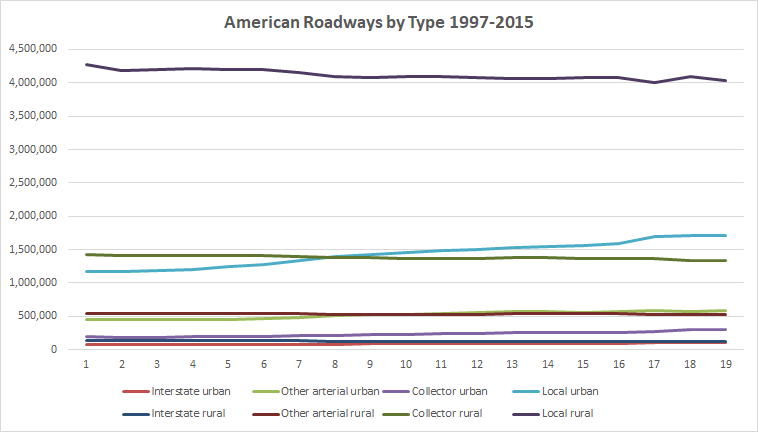How America’s Roads Became More Valuable than Ever

Government highways and roads are ubiquitous in American life. Most trips Americans take are by car. The quality, quantity, and management of road space is one of the primary political issues of local government.
The value of these assets differs from person to person, but economists have long modeled the value of roadways to attempt to measure changes over time. Since 1997 the Bureau of Economic Analysis has tracked the value of all road assets, shown in the chart below.
Today, the nation’s roads are more valuable than ever before. The total value of America’s roadways has nearly tripled since 1997, and the growth rate has outpaced the growth rate of all fixed assets over the time period.
What caused this run-up in road asset values is a mystery, but it certainly could have something to do with the changing makeup of American road infrastructure. Data from the Department of Transportation show that from 1997 to 2015 the number of road miles increased just 5 percent, but this number conceals a more interesting story. While overall roadway miles grew slowly, the number of miles of local urban roads increased by more than 46 percent while the number of miles of all rural roads decreased 5 percent.
While there remain far more rural local roads than all other asset classes, there are fewer of them today than there were 20 years ago. There is good reason to believe that America’s increasingly urban mix of roadways could explain some of the disproportionate growth in road value.
The urban land on which these new roads sit is typically more valuable than land under rural roads, often disproportionately so. Congestion is worse in cities, and and people value road congestion relief, so much so that traffic is a major political issue in urban areas almost everywhere. As Texas A&M Transportation Institute data show, this period has also been one of increasing urban traffic congestion. Congested roads increase the value of the land needed to relieve the congestion, either by widening the road, adding space to nearby streets, or reworking intersections. More congested roads mean real-estate prices for properties next to them that reflect the value of congestion relief.
Right-of-way space to relieve congestion is scarce, widening urban roads is typically extremely costly. Yet this does happen. There are 500,000 more lane miles of local urban roads today than in 1997. These disproportionately costly roads could be a major reason for the dramatic increase in the value of the nation’s roadway infrastructure in the last two decades. Absent market pricing of road space, numbers like the BEA’s can give insight into the true value of the nation’s largest class of public assets.
Image: Washington State Dept. of Transportation Photostream.










